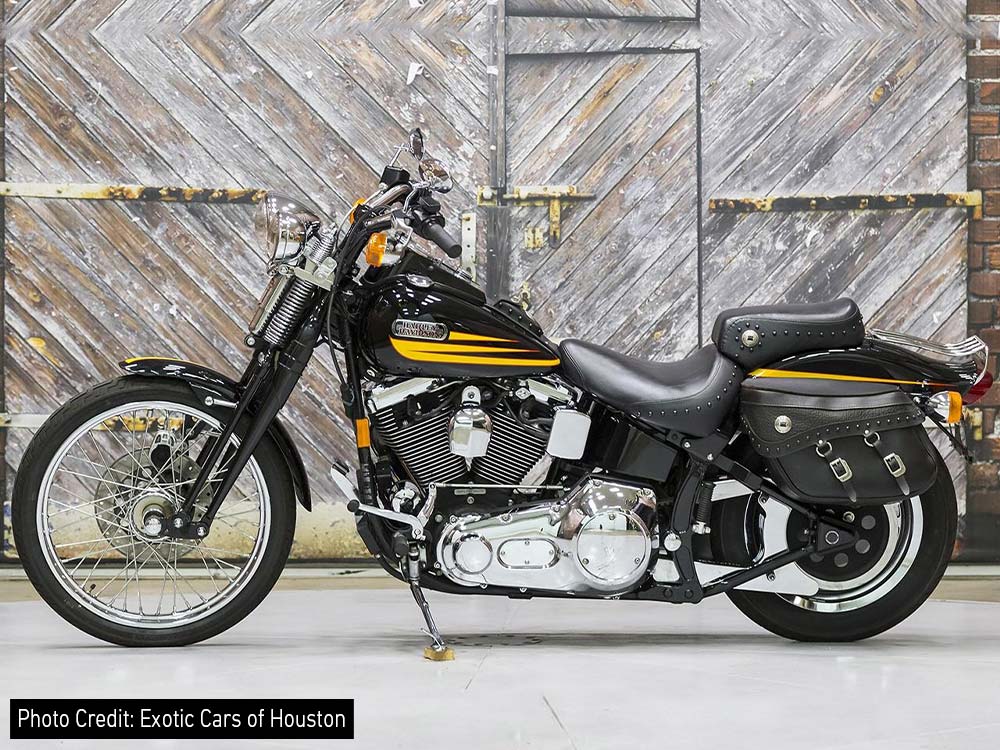Table of Content
The maintenance of the motorcycle clutch is crucial to achieve smooth gear shifts and best performance. Soaking the clutch plates in the oil is one of the most vital processes when changing plates on motorbikes. The procedure is usually misinterpreted or improperly done, resulting in wear and uneven clutch application.
The question: “ How long do you soak motorcycle clutch plates in oil? ” still remains a common one. If you are one of those who aren’t clear about it, this step-by-step insight will guide you to know how to properly maintain your bike’s clutch plates. However, first, we will learn about the role of clutch plates in a motorcycle.
1. What Is the Role of Clutch Plates in a Motorcycle?
The clutch system of the bike ensures that power generated by the engine is transferred to the transmission system. It also ensures that riders can manage acceleration and deceleration. The clutch system has a number of parts, and among them are:
Clutch basket
Pressure plates
Friction plates
The clutch plates engage and disengage with the crankshaft of the engine to control the speed of the bike.
The friction plates are configured using a material that enables them to hold and deliver the engine power. Nonetheless, these plates may start losing their effectiveness and wear out prematurely unless properly lubricated, resulting in uneven shifts or the outright failure of the clutch. It is not a precautionary measure to soak them in oil, but it is a necessary one.
2. The Importance of Soaking Motorcycle Clutch Plates in Oil
Most motorcycles have a wet clutch system as opposed to the dry clutch used in certain bikes, where the clutch plates are in contact with the engine oil. However, new friction plates come dry from the factory, so failure to soak them correctly can cause other mechanical issues.
Must Read: How Long Should a Motorcycle Clutch Last?
2.1 The Advantages of Clutch Plate Soaking in Motorcycles
2.1.1 Improved Lubrication
The dry plates have a tendency to absorb oil during the initial use, which may cause uneven engagement. Soak them and you can be sure of a quick and trouble-free operation.
2.1.2 Minimized Wear and Tear
A dry plate in contact with metal surfaces may cause excessive friction and may cause premature damage. This can be avoided by proper soaking.
2.1.3 More Smooth Engagement
A properly lubricated clutch basket enables plates to engage easily, making gear shifts smooth as well as minimizing clutch chatter.
Must Read: Why is My Motorcycle Clutch So Hard to Pull?
2.1.4 Prevention of Burnt Smell and Overheating
Friction generates heat, and when there is no lubrication, too much heat may be generated, resulting in a burnt smell.
Having learned the importance of soaking the motorcycle clutch plates, the next question that arises is how long to soak the clutch plates in oil?
3. How Long to Soak Motorcycle Clutch Plates in Oil?

The soaking time of clutch plates in oil differs among various riders and mechanics, but the manufacturers usually recommend between 30 minutes and as long as overnight.
3.1 A Breakdown of Different Clutch Plates Soaking Durations
3.1.1 Quick Soak (30 Minutes to 1 Hour)
In case you are in a hurry, it is still advisable to soak your clutch friction plates in oil for at least half an hour before installation.
Though it is better than installing dry plates, without soaking, it still does not permit complete saturation. There is a possible risk of rough clutch engagement.
3.1.2 Normal Soak (2-4 Hours)
Most motorcycle experts agree on this time interval because it gives ample time for the oil to penetrate into the clutch plates’ material.
The absorbent plates are saturated enough with oil, so they can work without a hitch during the initial use without worrying about uneven lubrication.
3.1.3 Best Soak (8-12 Hours or Overnight)
Soaking the motorcycle clutch plates in oil for 8-12 hours is good. However, if you soak the plates overnight, it will work best.
Maximum oil absorption occurs through overnight soaking, and this minimizes the chances of initial clutch slip or early wear.
Professional mechanics and bike racers who require optimum clutch performance prefer to use this method.
The soaking time should be selected depending on your time schedule. However, at least 2-4 hours are strongly advised in order to have the optimum level of lubrication and efficiency.
4. Choosing the Most Appropriate Oil to Soak Clutch Plates
Motorcycle clutch plates do not use just any oil, and the improper use of the clutch plates can result in the slipping of the clutch or even its deterioration. In selecting an oil, pay attention to the following:
Use Manufacturer-Recommended Oil: It is always good to consult your owner's manual to see what oil the manufacturer recommends.
Make Compatible With Wet Type Clutch Systems: Some automotive oils will have friction modifiers that will cause the clutch to slide too much.
Synthetic Vs. Conventional Oils: Synthetic oils are preferred by many riders because of their superior performance and long life, but conventional oils are also good, provided they are of the manufacturer's specifications.
Make sure the oil is clean and fresh, and not some old oil that may put debris in your clutch basket.
Must Read: Difference Between Dry Clutch and Wet Clutch
5. How to Soak Motorcycle Clutch Plates Step by Step
Take a Clean Container: Take a large, shallow, and wide container to immerse the friction plates completely.
Add the recommended oil: Pour the recommended oil up to all the plates, and cover with oil.
Immerse the clutch plates correctly: Place each of the plates flat in the basket so that they do not overlap to enable them to absorb oil uniformly.
Leave Them to Soak: Depending on how you like it, leave for the required time, at least 30 minutes, preferably 2-4 hours, or overnight. The longer the better.
Before installing, Drain Off Excess Oil: Excess oil should be drained off the clutch plates after the soaking process, and the plates allowed to drop off excess oil to avoid excess oil contamination in the system.
Install With Care and Right Sequence: It is important to put the clutch back together in the right order so that it can work.
This process will ensure that a motorcycle clutch is properly lubricated to avoid slipping, chatter, and early failure.
6. Common Mistakes to Avoid While Soaking Clutch Plates in Oil
Although soaking motorcycle clutch plates is easily done, there are some mistakes that make it less effective:
Omitting the Soaking Process All Together: Dry clutch plates require more wear and can lead to inappropriate engagement.
Wrong Oil: Automotive oils usually have additives that are inappropriate in a wet clutch, which makes it slip.
Failure to Provide Adequate Soaking Time: An improperly soaked clutch can produce inconsistencies in the oil saturation, creating a fluctuation in the clutch.
Incorrect Installs: Check that the clutch plates are in the correct stack and in the correct order in the clutch basket.
Being extra careful when soaking and installing saves you the expensive mechanical failure and keeps your motorcycle clutch in the finest shape.
Must Read: Automatic vs. Manual Motorcycle Maintenance
7. Final Thoughts: How Long Do You Soak Motorcycle Clutch Plates in Oil?
The time spent soaking motorcycle clutch plates is not a precaution; it is a must if a rider desires smooth and reliable performance. You can use a quick soak, regular soak, or an overnight soak; any way you do it, you need to ensure that you are saturating the oil well. Doing this will increase the life of the clutch and make your ride much more responsive and smooth.
The more you are patient in the clutch plates soaking process, the more you will enjoy the riding experience. It will also increase the life of your motorcycle clutch, and fewer mechanical issues will come your way.










Leave a comment
All comments are moderated before being published.
This site is protected by hCaptcha and the hCaptcha Privacy Policy and Terms of Service apply.